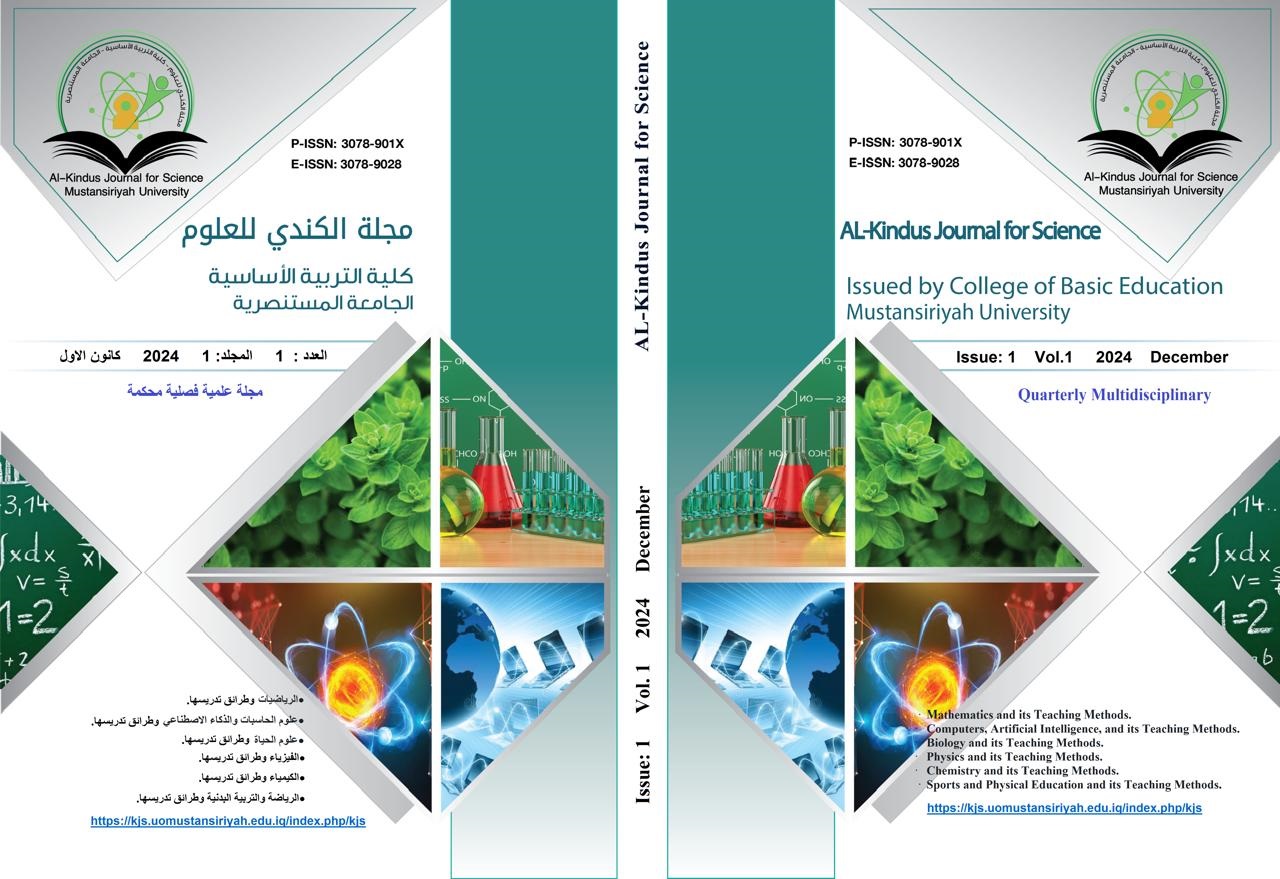The Impact of Obesity on The Physiological and Hormonal Status of Iraqi Women
الكلمات المفتاحية:
obesity، overweight، infertility، hirsutism، body mass indexالملخص
This study has focused on obesity and its relation to the physiologic and hormonal status of some Iraqi women. This is considered as one of the serious conditions that affect women, where coronary heart disease, osteoporosis, diabetes mellitus, infertility, and psychological disturbances, considered are the most important complications. The study was conducted on 69 serum samples from infertile patients, aged (16-44) years. The levels of FSH, LH, PRL, testosterone, progesterone, and TSH were estimated in the laboratory, in addition to pelvic ultrasonic examination was tested clinically. Some chemical parameters were measured in the sera of patients and control groups like fasting blood glucose, blood urea, and blood cholesterol. Other data included Body Mass Index (BMI), age, marital status, drug intake, family history, and the age at which menarche had started were installed. In our study, the results show significant differences in BMI, 0.0% of women had BMI less than 19.2% between 19 and 25, and 98% above 25. Notable risen ( ) have achieved in serum total cholesterol for the patients’ group when compared with the control group. While non-notable risen ( ) have achieved in the rest parameters (Fasting blood glucose, and blood urea) when compared with the control group. Considerable differences ( ) between the levels of FSH, PRL, testosterone, progesterone, and TSH in the patients when compared with the control group (20 women). And significant differences ( ) between the level of testosterone and progesterone in the patients who have no children ( ) when compared with patients who have children ( ).
المراجع
Sun and et al. (2020). "High BMI and Insulin Resistance Are Risk Factors for Spontaneous Abortion in Patients With Polycystic Ovary Syndrome Undergoing Assisted Reproductive Treatment: A Systematic Review and Meta-Analysis”. Forntiers in Endocrinolog. Vol. 11.
Leisegang et al.(2021). "Obesity and male infertility: Mechanisms and management”. Andrologia 53(1): 13617.
Idrees, K. and Ahmed Elhaj (2024). " Effects of Obesity in Male Fertility in Khartoum State”. American Journal of Medical Science and Innovation 3(2):84-90.
Vozova et al. (2024). " Effect of body mass index on semen quality, sperm chromatin integrity and sperm DNA methylation”. Obesity Research &Clinical Practice. DOI:10.1016/j.orcp.2024.09.276.
Laganà AS, Rossetti P, Buscema M, La Vignera S, Condorelli RA, Gullo G, et al. (2016). "Metabolism and Ovarian Function in PCOS Women: A Therapeutic Approach with Inositols". International Journal of Endocrinology.
Pandey S, Pandey S, Maheshwari A, Bhattacharya S (2010). "The impact of female obesity on the outcome of fertility treatment". Journal of Human Reproductive Sciences. 3 (2): 62–7.
Pasquali R, Patton L, Gambineri A (2007). "Obesity and infertility". Current Opinion in Endocrinology, Diabetes and Obesity. 14 (6): 482–7.
Wendy S. Vitek M.D.,and Kathleen M. Hoeger M.D., M.P.H. (2022). " Worth the wait? Preconception weight reduction in women and men with obesity and infertility: a narrative review”. Fertility and Sterility, Volume 118, Issue 3, Pages 447-455.
Baird DT, Swanston IA, McNeilly AS (1981). "Relationship between LH, FSH, and prolactin concentration and the secretion of androgens and estrogens by the preovulatory follicle in the ewe". Biology of Reproduction. 24 (5): 1013–25.
Gutam et al. (2023). " The challenges of obesity for fertility: A FIGO literature review ". Int J Gynecol Obstet.;160(Suppl. 1):50–55.
Pavli P. et al. (2024). " Infertility Improvement after Medical Weight Loss in Women and Men: A Review of the Literature”. Int. J. Mol. Sci. 25(3), 1909.
Ou XH, Li S, Wang ZB, Li M, Quan S, Xing F, et al. (2022). "Maternal insulin resistance causes oxidative stress and mitochondrial dysfunction in mouse oocytes". Human Reproduction. 27 (7): 2130–45.
Nikanfar et al. (2021)."Role of adipokines in the ovarian function: Oogenesis and steroidogenesis”. The Journal of Steroid Biochemistry and Molecular Biology, vol. 209.
Parker JE, Arscott GH (1972). "Obesity and fertility in a light breed of domestic fowl, Gallus domesticus". Journal of Reproduction and Fertility. 28 (2): 213–9.
Zatra Yamina, Deriuiche Louiza,and Ouennes Houria (2023). "Comparative study of testicular function in two races of Gallus gallus domesticus: the local and commercial race ". Genet. Biodiv. J, 2023; 7(2):151-162.
Medeiros, L. and et al.(2023): Anti-Müllerian Hormone levels after metformin treatment in polycystic ovary syndrome: A systematic review and meta-analysis. Obesity Research & Clinical Practice. Volume 17, Issue 4, Pages 288-297.
"Obesity and overweight". World Health Organization. Retrieved 2016-09-28.
Pasquali R, Patton L, Gambineri A (2007). "Obesity and infertility". Current Opinion in Endocrinology, Diabetes and Obesity. 14 (6): 482–7.
Brannian JD (2011). "Obesity and fertility". South Dakota Medicine. 64 (7): 251–4.
Mitchell M, Armstrong DT, Robker RL, Norman RJ (2005). "Adipokines: implications for female fertility and obesity". Reproduction. 130 (5): 583–97.
Vander Borght M, and Wyns C.(2018).” Fertility and infertility: Definition and epidemiology”. Clin Biochem. 62:2-10.
Fanchin, R; Schonauer, LM; Righini, C; Frydman, N; Frydman, R; Taieb,J.(2023):Serum anti-Müllerian hormone dynamics during controlled ovarian hyperstimulation. Hum Reprod. 18:328–wa332.
Hahn, S., Tan, S., Elsenbruch, S., Quadbeck, B., Herrmann, BL., Mann, K., Janssen, OE. (2005): Clinical and biochemical characterization of women with polycystic ovary syndrome in North Rhine-Westphalia. Horm Metab Res 37:438–444
التنزيلات
منشور
إصدار
القسم
الرخصة
الحقوق الفكرية (c) 2024 Zahraa Ismaeel (Author)

هذا العمل مرخص بموجب Creative Commons Attribution-NonCommercial 4.0 International License.




